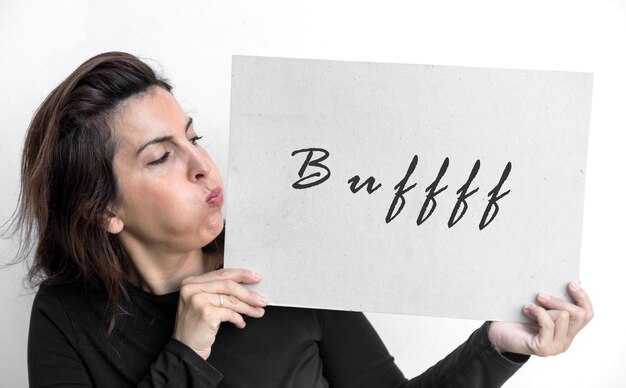Try something right now: take a quick reality check of the room you’re in while watching this and notice what’s on every surface. Are there stacks of things everywhere—papers, shoes, cups, water bottles, piles of laundry? Projects half-finished that you always mean to complete but never do? Living amid that kind of constant visual and practical overload feels awful, doesn’t it? There’s often a heavy layer of shame. Then, just when you decide “Okay, I need to clean this up,” you kind of glaze over and freeze. No matter how perfect your to-do list looks, you can’t follow through. Time slips away, the day ends, and the same thing happens again. People who have experienced trauma are very familiar with this pattern. It’s a freeze response, and it can last an hour, a day, years, or even a lifetime. That was the environment I grew up in: clutter gradually ballooning into a full-blown hoarder home. Only six months ago I went back and cleared out the house after my stepdad died, and it stirred up a lot—memories of what it was like to live that way and reflections on which parts of me are still affected. I’ve mostly learned to keep things tidy, but there’s still this sense of dragging entropy that pulls me down sometimes—and that’s a trauma symptom. Clutter often shows up in families marked by trauma, and when one person is generating it, everyone else is impacted. So it’s time to move past shame and actually understand what’s happening: clutter can be a symptom of trauma. When childhood involved neglect, chaos, criticism, yelling, hitting, being unseen, or feeling unsafe, a developing nervous system adapted to survive by freezing and bracing. That freeze can calcify into a chronic stress state, and long after the original trauma ends the tendency to freeze can remain, popping up whenever stress rises. This is one form of nervous system dysregulation—something that can happen to anyone. Most people eventually re-regulate on their own, but those with trauma histories can fall out of balance more easily and stay stuck longer. That’s why cluttering behaviors tied to a freeze state are especially common in folks with childhood PTSD. Dysregulation doesn’t look the same in everyone: some people explode with anger, others zone out, isolate, numb with food or alcohol, or binge-watch. Some build lives around piles—clothes in corners, dishes on surfaces, a stack of unresolved decisions. It’s not laziness or a moral failing or an inherent “messy” personality—your nervous system is overwhelmed. When trauma has hijacked your brain, even tiny tasks can feel unattainable. And here’s a part people often miss: trying to clean while you’re dysregulated is a setup for failure. It’s like attempting a marathon with a broken ankle—you can force it, but you may pay a cost later. Pushing through dysregulation without first re-regulating can wear you down, leave you exhausted, and fuel self-loathing. Any progress gained by brute force tends to be short-lived, because the real issue isn’t the clutter itself; it’s the underlying dysregulation. So when you try to overhaul your life and nothing sticks, that’s a clue: dysregulation might be the root cause. How do you fix that? You won’t shame or reorganize your way out of it, though many people think that will work. You can’t think yourself out of it either. What’s required is a method to re-regulate—bringing your nervous system back into balance so your brain can function clearly: calm, present, and focused. That’s what is taught here—how to re-regulate and stay regulated so you can finally accomplish the things you’ve been trying at for years, even when some tasks need sustained attention. The pattern is familiar: a burst of productivity on a “good” day, then a long plateau. For example, I have a basket of knitting with special yarn I bought fifteen years ago still sitting on a shelf waiting for me to pick it up again. You might tell me to donate it, and you’d be right—but cluttering isn’t about the practical choices; it slides you into a freeze universe where decisions stall. The main tool I use and teach is what I call the daily practice. It’s straightforward, free to learn (I offer a free course), and it works. Here’s the gist: sit for ten minutes and use a structured writing practice to name and write down the fearful and resentful thoughts and emotions you’re carrying. The format is specific, which is why I give away a short free course that teaches it clearly—you can’t fully learn it in a single video, but this gives you the idea. Putting those worries and resentments on paper takes them out of your head so they stop piling up unprocessed. For many with early trauma, intense thoughts and feelings are hard to digest; instead of becoming calm memories they stay charged, triggering adrenaline as if the event were still happening. When a thought or feeling is processed properly it becomes a memory you can think about without spiraling. Complex PTSD often causes this processing pipeline to jam, which is why I have described the experience for two decades as a mind full of “jammed-up” thoughts and feelings—only recently did I learn there’s scientific backing to how trauma impairs processing. Quick note: you’re invited to take the free daily practice course. It’s short and teaches two techniques designed to help you release harsh, looping thoughts and feelings that arise when you’re triggered, so you can experience more clarity, focus, and ease. Sounds appealing, right? Find the free daily practice link on the second line of the description below. The course begins with the writing technique—the daily practice—and includes two methods. First you name the fearful and resentful thoughts and emotions and put them on paper so they’re no longer swirling in your head. Then you write what I call a sign-off—a statement of intent to release, or a prayer if you prefer—to ask a higher power to remove those fears and resentments. You don’t even have to fully believe it; just do the practice, then take a rest. Yes—rest. It’s that simple: a gentle, accessible form of meditation with no apps, special breathing, or elaborate setup. Close your eyes and let your nervous system and brain reset. Call it super-simple meditation; use a mantra if that helps or, if you already have a meditation routine, keep using it. When you practice consistently—especially when you feel frozen, freaked out, or encircled by mess—things begin to shift. You’ll feel more grounded; instead of spiraling or checking out at the sight of a pile of clothes, you simply pick one item up. The unopened stack of mail gets opened without overthinking, panicking, or self-criticism if it isn’t finished in one go. You act because your brain is back online—that’s what regulation feels like. The world doesn’t necessarily become easier, but you become more resilient. Clutter doesn’t always stem from trauma—many people live in disorder for numerous reasons—but when mess is chronic and entangled with shame, overwhelm, and hopelessness, treating it like a motivation problem isn’t helpful. It could very well be a nervous system issue that requires a nervous system approach. You don’t have to keep hiding from your life or waiting to “feel like it,” because that day may never arrive. What’s needed are tools and daily habits that regulate you; lists, bins, calendars, and self-blame won’t solve this alone. A functional, peaceful home and an end to feeling stuck are possible, but it begins with honesty and regulation. Quick note: if you’re watching and wondering whether past trauma is shaping your life now, there’s a checklist of signs that current struggles might be linked to childhood neglect or abuse—knowing this can normalize your experience and point toward healing. Download the signs of childhood PTSD quiz using the top link in the description below. If you want to learn the daily practice, I teach it for free in the second link beneath this video—try it for thirty days and observe the changes. The pile of laundry won’t vanish by itself, and neither will the shame, fog, or dysregulation until you address them with tools and start to let them go. You’ve waited long enough, so begin today. If this video resonated, there’s another one queued up here that you might enjoy.
Practical, trauma-informed strategies to add
Below are short, actionable techniques that pair nervous-system work with gentle, manageable ways to reduce clutter and decision fatigue. Use what fits your life and energy level.
Regulate first — a simple 3-step mini-routine
- Writing (10 minutes): Set a timer. Free-write the fearful or resentful thoughts you notice. Be specific—name the thought, where it shows up, and how it feels in your body. After listing, write one short “sign-off” statement (e.g., “I release these fears for now” or “I allow these to rest”).
- Grounding (1–3 minutes): Do a quick senses check: name 5 things you can see, 4 you can touch, 3 you can hear, 2 you can smell, 1 you can taste (5-4-3-2-1). Or try box breathing: inhale 4, hold 4, exhale 4, hold 4 — repeat 3–5 times.
- Rest (2–5 minutes): Close your eyes or sit quietly; don’t jump straight into a big task. Let the nervous system settle so you have usable energy for a micro-action.
Micro-actions to actually move things
- Two-minute rule: If a task takes two minutes or less (trash, put plate in dishwasher, hang one item), do it immediately.
- Five- or ten-minute bursts: Set a timer and commit to one short, focused burst—one drawer, one shelf, one corner of a room—then stop and rest.
- Single-surface rule: Choose one surface (a nightstand, counter, or desk) and clear it. Progress is visible and motivating.
- Three-box method: Keep three boxes labeled KEEP, DONATE, TRASH. Touch each item once and place it in a box. Limit decision time—if unsure, put it in SOMEDAY with a removal date.
- Batch sorting: Handle mail once—open, quickly sort, toss junk, and file/action the rest. Limit to a short window after regulation.
Reduce decision fatigue

- Limit choices: Create simple rules (e.g., if you haven’t used it in 12 months, consider donating).
- Pre-made decisions: Keep a small “maybe” box with an expiration date—if you haven’t acted by then, donate.
- Consistent containers: Use identical boxes/bins and label them—this reduces the mental energy of “where does this belong?”.
Social and professional supports

- Buddy system: Invite a nonjudgmental friend to help for short sessions—people who are encouraging and calm help keep you regulated.
- Trauma-informed organizers: A professional organizer who understands trauma can pace the work, reduce shame, and create systems that last.
- Therapy options: If clutter is tied to trauma, look for trauma-informed therapists and modalities such as EMDR, somatic experiencing, CPT, DBT, or sensorimotor psychotherapy to address underlying dysregulation.
Safety and when to seek help
- If clutter presents health or safety risks (blocked exits, mold, pests, fire hazards), contact local health or housing services for assistance right away.
- If you feel overwhelmed, hopeless, or in crisis, reach out to a mental health professional, crisis line, or emergency services in your area.
- Severe hoarding often needs coordinated support—medical, social, and organizing help—so seeking a clinician who understands hoarding and trauma is important.
30-day experiment (simple and doable)
Try this pairing: each day for 30 days, do the 10-minute daily writing practice, then follow it with one micro-action (2–10 minutes) focused on a single surface. Track small wins (a checklist or a note) and celebrate progress. If a day feels impossible, do the regulation step only—that counts too.
Remember: change rarely comes from forcing yourself; it comes from creating a steady, compassionate routine that restores your nervous system and reduces the mental load of constant decisions. Small, consistent steps beat sporadic overhauls every time. You’re not broken—you’re responding to a nervous system that once needed to protect you. With regulation, tiny actions become possible, shame softens, and a livable, peaceful home becomes realistic. Start where you are, protect your energy, and ask for support when needed.


 Surprising Signs You’re NOT "Messy"— It’s a Trauma Response">
Surprising Signs You’re NOT "Messy"— It’s a Trauma Response">

 Say This and an Avoidant Will Trust You for Life!">
Say This and an Avoidant Will Trust You for Life!">
 Trauma Makes You Prone to Conflict: Here’s How to Stop">
Trauma Makes You Prone to Conflict: Here’s How to Stop">
 This Isn’t Anger — It’s Something Deeper (And It’s Wrecking Your Life)">
This Isn’t Anger — It’s Something Deeper (And It’s Wrecking Your Life)">
 Dismissive Avoidant Disrespect | The Painful Truth They’ll Never Confess | Avoidant Attachment Style">
Dismissive Avoidant Disrespect | The Painful Truth They’ll Never Confess | Avoidant Attachment Style">
 “Alpha Male” Rehab пїЅпїЅ">
“Alpha Male” Rehab ��">
 If They Do THIS, You’re More Than Special to Avoidants | Avoidant Attachment Style">
If They Do THIS, You’re More Than Special to Avoidants | Avoidant Attachment Style">
 How to Validate your Partners Irrational Feelings">
How to Validate your Partners Irrational Feelings">
 THESE Signs Mean an Avoidant Feels Authentic Love for You (Psychology)">
THESE Signs Mean an Avoidant Feels Authentic Love for You (Psychology)">
 4 Questions Avoidants can’t answer, Don’t be Late, Ask them This | Jordan Peterson">
4 Questions Avoidants can’t answer, Don’t be Late, Ask them This | Jordan Peterson">
 The Exact Moment the Avoidant Finally Cracks | Mel Robbins Best motivational speech">
The Exact Moment the Avoidant Finally Cracks | Mel Robbins Best motivational speech">